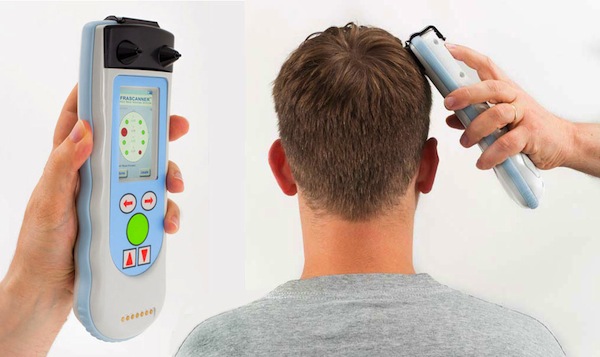Handheld Brain Scanner Detects Hemorrhaging And Saves Lives


A device recently approved by the FDA could save millions of trauma victims from succumbing to brain injuries. The InfraScranner Model 2000 is a noninvasive handheld device—a wand, if you will—that detects brain hematomas.
Ten million people seek medical treatment for head trauma globally each year—1.5 million in the U.S. alone. As many of 40 percent of head-injury patients develop life-threatening intracranial hematomas. Once a brain bleed begins, timely diagnosis and intervention before neurological deterioration begins is vital in ensuring successful treatment.
“Before the Infrascanner, first responders had to rely on imprecise methods to detect brain bleeds in patients, potentially delaying treatment,” said Dr. Joseph Maroon, Professor and Vice Chairman of the Department of Neurological Surgery at the University Of Pittsburgh, team neurosurgeon for the Pittsburgh Steelers, and Medical Advisory Board member of civilian Infrascanner distributor, MedLogic LLC.
The device resembles a remote control, and when held against a head can determine if a person’s brain is hemorrhaging, detecting variances between normal brain tissue and hematomas with infrared light absorption. The infrascanner doesn’t take the place of more thorough hospital diagnostics, such as CT scans, but it can be used to assess injuries at the scene of an accident. If intracranial hematoma is detected by first responders, patients can benefit from more immediate referral to targeted hospital resources such as CT scans.
Infrascan—the company behind the Infrascanner Model 2000—says its device can be used in a clinical setting as well. According to the company, the Infrascanner can be used to monitor hospital patients with head injuries and those intoxicated with drugs or alcohol. It can even be used to screen athletes in contact sports—such as football, rugby, boxing and soccer—where head injuries are more likely to occur.
The FDA granted approval for the Infrascanner Model 2000 to be used in military and civilian settings. It was developed in partnership with the U.S. Navy and Marine Corps.
[Image via Infrascan]









































